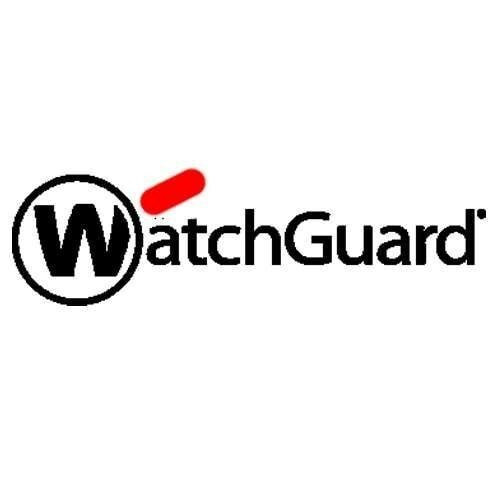Product Description
WatchGuard Reputation Enabled Defense 1-yr for Firebox Cloud Small
Overview:
Firebox Cloud brings the proven features and Service of the Firebox to the Amazon Web Service (AWS) cloud computing platform. Firebox Cloud uses the same powerful Fireware OS and most of the same subscription Service available on other Firebox models. You can use Firebox Cloud to protect servers deployed on your AWS virtual private cloud, and you can use it as a secure VPN endpoint for connections to resources on your virtual network.
For greater visibility into the status of traffic and security on your virtual network, you can use WatchGuard Dimension to monitor Firebox Cloud.
Firebox Cloud License Options
In the AWS Marketplace, you can purchase Firebox Cloud with two different license options.
Bring Your Own License (BYOL)
With this license option, Amazon charges you for the EC2 instance. You then purchase a license for Firebox Cloud separately from an authorized WatchGuard reseller. In your account on the WatchGuard website, you activate the Firebox serial number and specify the AWS instance ID, which enables you to get a feature key. You then apply the feature key to your Firebox Cloud instance, which enables you to configure all the licensed features. This feature key has an expiration date. You can purchase a renewal from an authorized WatchGuard reseller.
You can purchase a Firebox Cloud for one of five models. The models are based on the maximum number of AWS vCPUs that Firebox Cloud uses.
| Firebox Cloud Model | Maximum AWS vCPUs |
|---|---|
| Small | 2 |
| Medium | 4 |
| Large | 8 |
| Extra Large | 16 |
If you deploy Firebox Cloud on a VPC that has more vCPUs than the Firebox Cloud model supports, Firebox Cloud uses only the supported number of vCPUs.
Pay As You Go
With this license option, the cost of the license for Fireware Cloud and all security Service is included in the price charged by Amazon. Amazon bundles the price of your Firebox Cloud usage with other costs for the VPC. This provides a perpetual license with no fixed expiration date. There is no need to purchase, activate, or renew a separate feature key from WatchGuard.
For either licensing option, the available security features and deployment steps are the same. For the Bring Your Own License licensing model, you activate your license and apply the feature key after you deploy your instance of Firebox Cloud.
About Amazon Web Service
Amazon Web Service (AWS) is a flexible, on-demand, cloud Service platform that provides compute power, database storage, and Service at a variable cost based on the resources you use. If you are new to AWS, you must understand the AWS terms and concepts in this section before you deploy Firebox Cloud.
- Amazon Virtual Private Cloud (VPC)
An Amazon VPC is a logically isolated private virtual network environment in the AWS cloud. Firebox Cloud, and the virtual servers it protects, are all virtual machines that you deploy in a VPC. - Amazon Elastic Compute Cloud (EC2)
Amazon EC2 is a virtual server hosting service that provides scalable computing capacity in the AWS cloud, Amazon Machine Image (.AMI). An .AMI is a virtual machine template that you use to deploy a virtual server in AWS. Firebox Cloud is delivered as an .AMI file that you use to deploy Firebox Cloud in your AWS VPC. - EC2 Instance
To launch one or more EC2 instances, you use an .AMI file. Each instance is a copy of the .AMI that runs as a virtual server. When you launch a new instance, you select the instance type, which determines the amount of CPU, storage, and network capabilities assigned to the instance. Firebox Cloud runs as an EC2 instance in your Amazon VPC. Each instance has a unique Instance ID. - Elastic IP Address (EIP)
An Elastic IP address is a static public IP address that you can assign to an EC2 instance. First, you allocate an Elastic IP address to a VPC, and then you associate it with an EC2 instance in the VPC. For Firebox Cloud, you allocate an Elastic IP address for the external interface. - Security Group
The security group is a virtual firewall that controls which inbound and outbound traffic is allowed to reach the associated instances. In the security group, you define rules that control what traffic to allow. When you launch an instance, you must specify at least one security group. - AWS Regions and Availability Zones
AWS has ten AWS Regions, which are in ten different regions around the world. Each region contains several Availability Zones. A VPC can contain subnets in different Availability Zones.
 US Dollars
US Dollars
 United Arab Emirates Dirham
United Arab Emirates Dirham
 Euro
Euro
 British Pound
British Pound
 Turkish Lira
Turkish Lira
 Canadian Dollar
Canadian Dollar
 South African Rand
South African Rand
 Indian Rupee
Indian Rupee
 Brazilian Real
Brazilian Real
 Indonesian Rupiah
Indonesian Rupiah
 Singapore Dollar
Singapore Dollar
 South Korean Won
South Korean Won
 Japanese Yen
Japanese Yen
 Chinese Yuan
Chinese Yuan
 Mexican Peso
Mexican Peso
 Qatari Rial
Qatari Rial
 Saudi Riyal
Saudi Riyal











